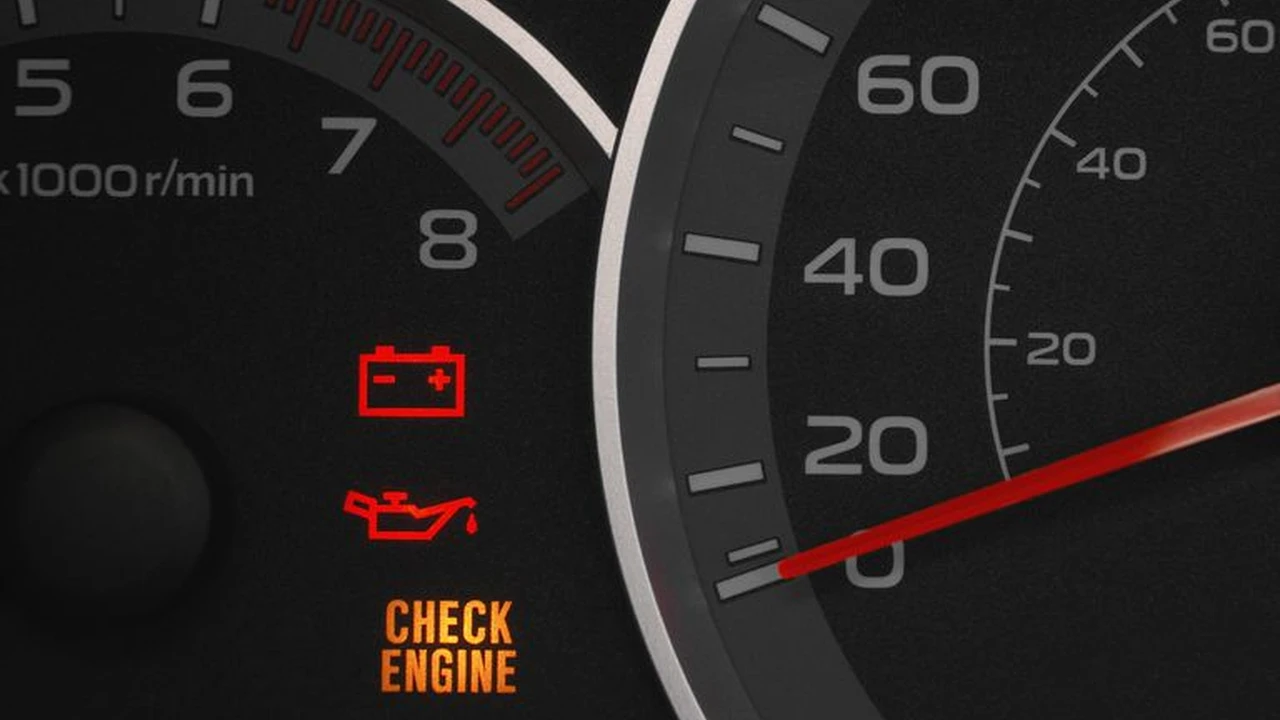How to Reset Your Car's Check Engine Light: Troubleshooting

Understanding the Check Engine Light and Its Causes
Okay, so that little light on your dashboard is glaring at you. The dreaded Check Engine Light (CEL). Don't panic! It doesn't always mean your car is about to explode. It's basically your car's way of saying, "Hey, something's not quite right. Come check me out." But what exactly triggers it? Well, it could be a whole bunch of things, from something simple like a loose gas cap (seriously, that's a common one!) to something more serious like a faulty oxygen sensor or catalytic converter. Your car's computer, the Engine Control Unit (ECU), monitors a ton of sensors throughout the engine and drivetrain. When one of those sensors reports a reading outside of a predetermined range, the ECU throws a code and illuminates the CEL.
Common culprits include:
- Loose Gas Cap: Seriously, check this first. It's free and takes two seconds.
- Oxygen Sensor Issues: These sensors measure the amount of oxygen in your exhaust. If they're not working right, your fuel economy can suffer, and you might even damage your catalytic converter.
- Catalytic Converter Problems: This expensive part helps to clean up your exhaust. If it fails, you'll definitely see that CEL.
- Mass Airflow Sensor (MAF) Problems: The MAF sensor measures the amount of air entering the engine. A faulty MAF sensor can cause a variety of issues including poor fuel economy, rough idling, and stalling.
- Spark Plug or Ignition Coil Issues: Misfires due to faulty spark plugs or ignition coils are a common cause.
- Vacuum Leaks: Small leaks in vacuum hoses can throw off the engine's air-fuel mixture.
Diagnosing the Check Engine Light DIY Car Diagnostic Tools
So, how do you figure out what's causing the light to come on? You could take it to a mechanic, but that can get expensive, especially if it's something simple. Luckily, there are a few things you can do yourself. The first step is to retrieve the trouble code. This can be done using an OBD2 scanner. These scanners plug into a port usually located under the dashboard. Once connected, the scanner can read the error codes stored in the car's computer.
OBD2 Scanners: Your DIY Diagnostic Tool: OBD2 scanners are relatively inexpensive devices that plug into your car's OBD2 port (usually located under the dashboard). They can read the trouble codes stored in your car's computer, giving you a clue as to what's going on. Some scanners can even clear the codes and reset the CEL.
Product Recommendation: Let's talk about some specific scanners. The Autel MaxiCOM MK808 (around $300-$400) is a great mid-range option. It not only reads and clears codes but also offers advanced features like live data streaming, component testing, and even some bi-directional control. It's a good choice if you're a serious DIYer. For a more budget-friendly option, consider the FIXD Sensor (around $60-$80). It's a small, Bluetooth-enabled device that pairs with your smartphone. It's easy to use and provides basic code reading and clearing functionality. Finally, for professional use, the Snap-on Solus Edge (around $2000-$3000) offers comprehensive diagnostics and advanced features.
Using an OBD2 Scanner: A Step-by-Step Guide:
- Locate the OBD2 Port: It's usually under the dashboard on the driver's side.
- Plug in the Scanner: Make sure the scanner is securely connected.
- Turn on the Ignition: Turn the key to the "on" position, but don't start the engine.
- Follow the Scanner's Instructions: The scanner will guide you through the process of reading the codes.
- Write Down the Codes: These codes will tell you what the problem is.
Resetting the Check Engine Light Methods and Precautions
Okay, you've got the code. Now what? Before you reset the light, it's crucial to understand that resetting the light *doesn't fix the problem*. It only turns off the light. If the underlying issue is still there, the light will come back on. Think of it like taking a painkiller for a broken leg – it might mask the pain for a while, but the leg is still broken. Therefore, only reset the light if you've addressed the issue that caused it to illuminate in the first place.
Here are a few ways to reset the CEL:
Using an OBD2 Scanner to Clear Codes
This is the most reliable and recommended method. Most OBD2 scanners have a "clear codes" or "erase codes" function. Simply follow the scanner's instructions to clear the codes and reset the light.
Product Comparison: When choosing an OBD2 scanner, consider factors like ease of use, features, and price. The Innova 3100i (around $80-$100) is a popular choice for its user-friendly interface and ability to read and clear codes. The BlueDriver Bluetooth Professional OBDII Scan Tool (around $120-$140) offers advanced features like live data and repair reports, but it requires a smartphone or tablet to operate.
Disconnecting the Car Battery as a Resetting Method
This is an older method, and it's not always recommended, especially on newer cars. Disconnecting the battery can erase other important data, like your radio presets and seat memory settings. However, if you're in a pinch and don't have a scanner, you can try it.
How to Disconnect the Battery:
- Locate the Battery: It's usually under the hood, but sometimes it's in the trunk or under the back seat.
- Disconnect the Negative Terminal: Use a wrench to loosen the nut on the negative (-) terminal and carefully remove the cable.
- Wait 15-30 Minutes: This allows the car's computer to reset.
- Reconnect the Negative Terminal: Tighten the nut securely.
Important Precautions: Always wear safety glasses and gloves when working with a car battery. Be careful not to touch the positive (+) terminal with your wrench while disconnecting the negative (-) terminal, as this can cause a short circuit.
Driving Cycle as a Resetting Method
Sometimes, the CEL will turn off on its own after the car has completed a certain number of "driving cycles." A driving cycle typically involves starting the car, driving it for a specific period of time at different speeds, and then letting it cool down completely. The exact requirements for a driving cycle vary depending on the car's make and model. This method is the least reliable and can take several days or even weeks.
Troubleshooting Common Check Engine Light Codes
Okay, so you've got the code, but what does it actually mean? Here are a few of the most common codes and what they typically indicate:
P0420 Catalytic Converter Efficiency Below Threshold
This code usually means that your catalytic converter is not working as efficiently as it should. It could be due to a faulty catalytic converter, a leaking exhaust, or problems with the oxygen sensors.
Troubleshooting Steps: Check for exhaust leaks, inspect the oxygen sensors, and consider replacing the catalytic converter if necessary. A replacement catalytic converter can range from $200 to $1000 depending on the vehicle and brand. Brands like MagnaFlow and Walker are popular choices.
P0171 System Too Lean Bank 1
This code indicates that the engine is running lean, meaning there's too much air and not enough fuel. This can be caused by a vacuum leak, a faulty MAF sensor, or a clogged fuel filter.
Troubleshooting Steps: Check for vacuum leaks, clean or replace the MAF sensor, and replace the fuel filter. A new MAF sensor typically costs between $50 and $200. Brands like Bosch and Denso are well-regarded.
P0300 Random Misfire Detected
This code indicates that the engine is misfiring, meaning one or more cylinders are not firing properly. This can be caused by faulty spark plugs, ignition coils, or fuel injectors.
Troubleshooting Steps: Replace the spark plugs, test the ignition coils, and clean or replace the fuel injectors. A set of spark plugs can cost between $20 and $100. NGK and Denso are popular spark plug brands.
P0442 Evaporative Emission Control System Leak Detected (Small Leak)
This code often points to a small leak in the evaporative emission control system (EVAP), which prevents fuel vapors from escaping into the atmosphere. A common cause is a loose or damaged gas cap.
Troubleshooting Steps: Start by tightening or replacing the gas cap. If the code persists, inspect the EVAP system hoses and components for leaks or damage. Aftermarket gas caps from brands like Stant and Motorad typically cost between $10 and $30.
When to Seek Professional Help
While you can diagnose and reset the CEL yourself in many cases, there are times when it's best to seek professional help. If the CEL comes back on repeatedly after you've reset it, or if you're not comfortable working on your car, it's always a good idea to take it to a qualified mechanic. Also, if the CEL is flashing, this usually indicates a more serious problem that requires immediate attention.
Finding a Reliable Mechanic: Look for a mechanic who is certified by the National Institute for Automotive Service Excellence (ASE). Ask for recommendations from friends and family, and read online reviews. Be sure to get a written estimate before any work is performed.
Preventative Maintenance to Avoid Check Engine Light Issues
The best way to deal with a CEL is to prevent it from coming on in the first place! Regular maintenance is key to keeping your car running smoothly and avoiding costly repairs. Some simple things you can do include:
- Regular Oil Changes: Keep your engine properly lubricated.
- Replacing Air Filters: Ensure proper airflow to the engine.
- Checking and Replacing Spark Plugs: Maintain proper ignition.
- Inspecting and Replacing Hoses and Belts: Prevent leaks and breakdowns.
- Keeping Your Gas Cap Tight: Prevent EVAP system leaks.
By following these tips, you can help keep your car running smoothly and avoid the dreaded Check Engine Light!
:max_bytes(150000):strip_icc()/277019-baked-pork-chops-with-cream-of-mushroom-soup-DDMFS-beauty-4x3-BG-7505-5762b731cf30447d9cbbbbbf387beafa.jpg)





